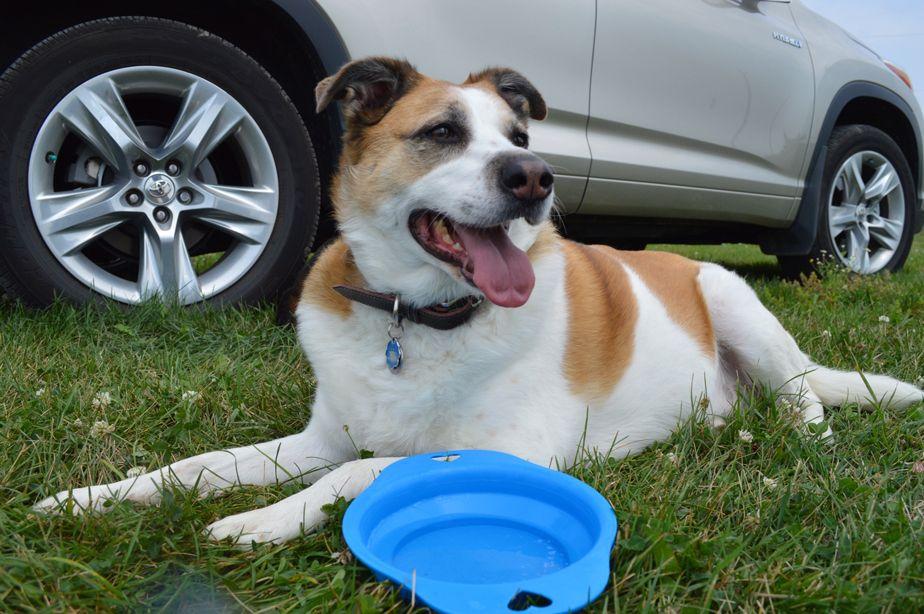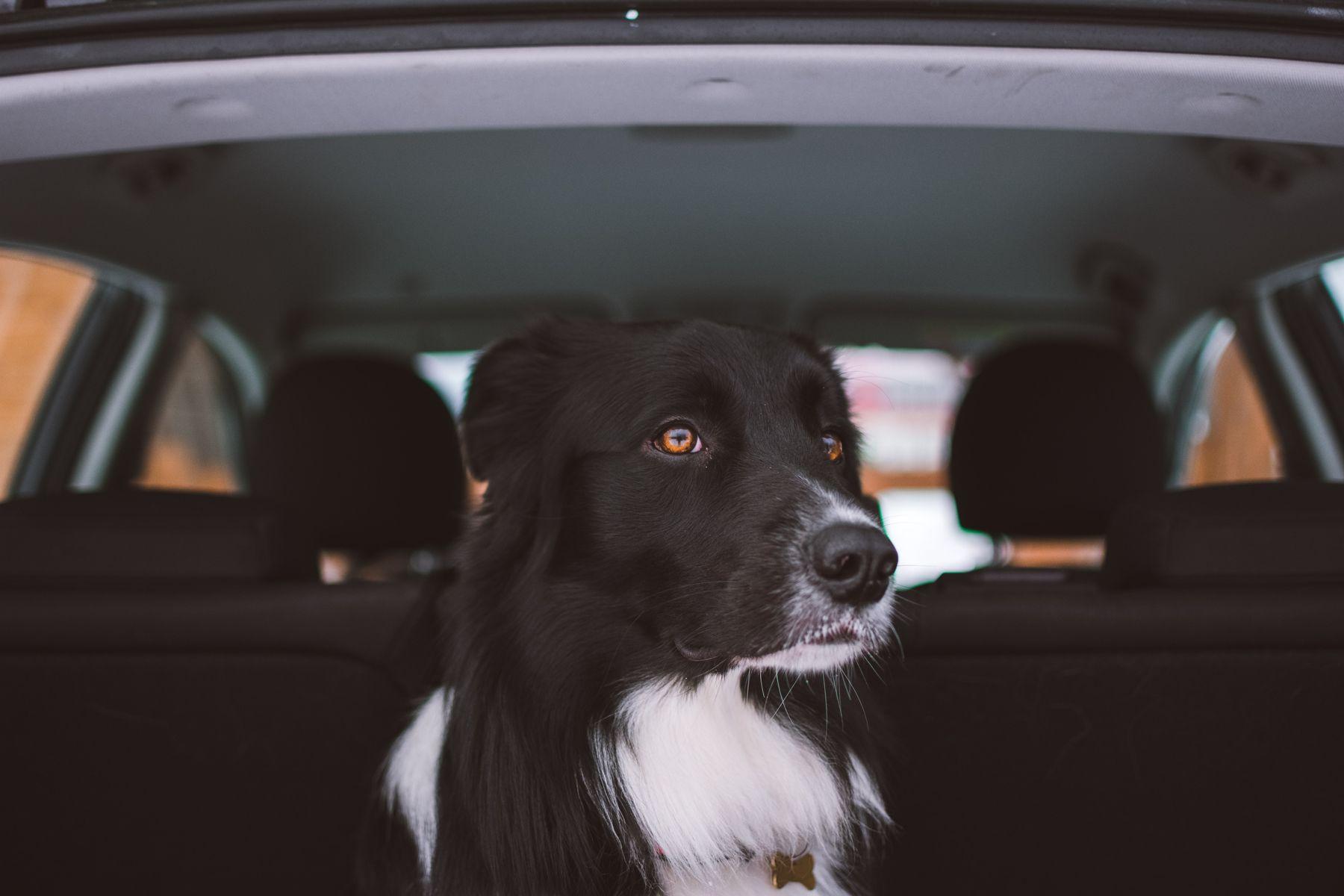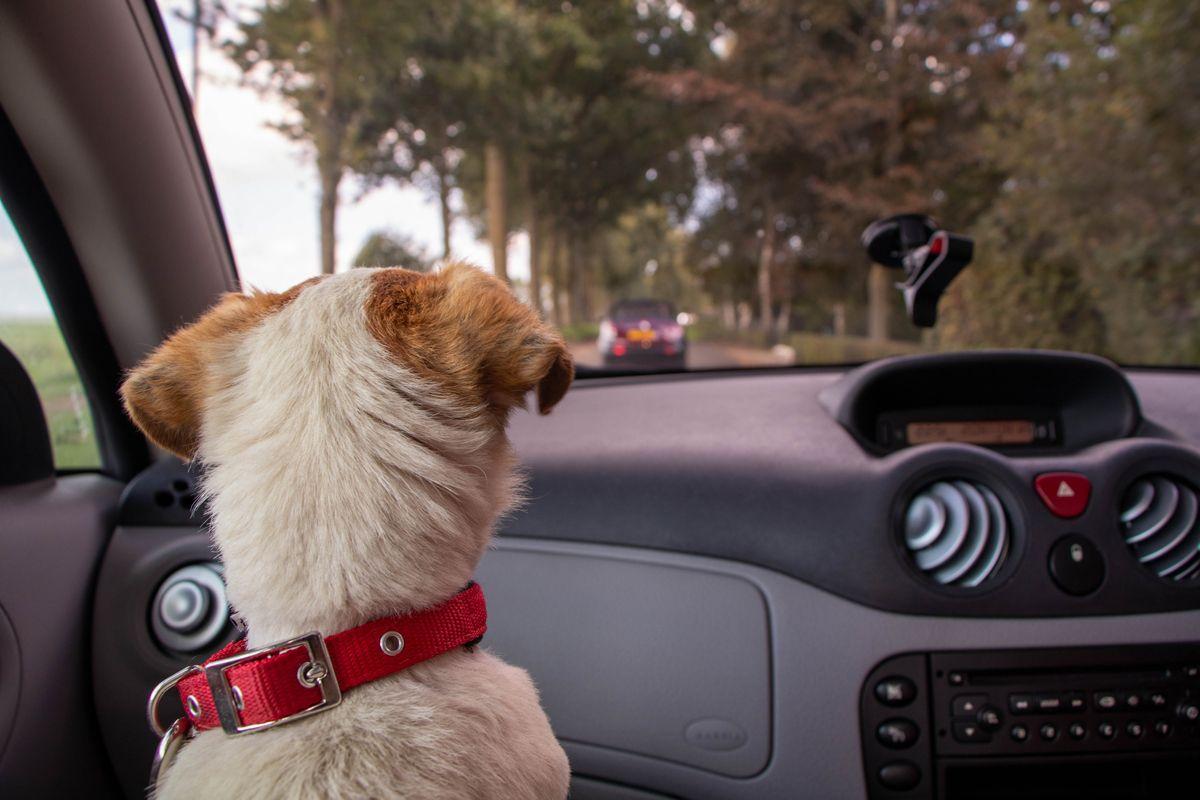
How to travel with a dog in the car
9th May, 8-minute read
It looks so easy...
We’ve all spied owners flicking open a boot or a car door for a dog to hop in, and thought how much fun it seems to travel with a canine companion, but is it actually as simple as opening doors and shutting them like some sort of dog chauffeur? The answer, sadly, is no, but that doesn't mean that you have stay at home. With a little preparation and some well-chosen equipment, you can range as far and wide as ever.

Getting used to the car
First things first – does your dog seem nervous about your car? Things to look out for could include: heavy panting, whining, barking, vomiting or indeed just refusing to get in at all. If your dog shows any sign of this, it could be a clue to start off your car training very slowly, and very gently.
This could begin with introducing your car to them, engine off, and doors shut. Walk them around the vehicle, as close as they’re comfortable, allowing for lots of gentle sniffs, cautious exploration and possibly some gentle “scent marking”. Reward any behaviour that’s inquisitive, or showing interest in the vehicle. Keep these conditioning sessions short, like us, dogs have brief attention spans, and limited willpower. Try to perform this a few times, or at least until they seem more comfortable with the experience.
Once fully relaxed about driveway rendezvous with your car, it might be time to let them meet the interior. Keep the engine off, and find the space in the car you expect them to occupy on car journeys. You may then create a trail of treats to coax them to their designated spot in the vehicle, putting the first of the treats somewhere they can reach from outside and progressing all the way to their bed. If hesitant, build up slowly, and try getting in yourself to demonstrate its non-lethality. Work this up to spending some time in the car with your dog, doors open, perhaps with a few treats, or something to amuse them for a longer stretch.
Once they’re used to spending time inside, you can trial closing the doors, opening them again to allow them not to feel trapped. If all goes well, you can begin starting the engine with them inside, running the engine for a few seconds, before switching off again. All the while keeping them satiated with treats and attention, whilst looking out for those key indicators of stress.
Should your dog make it to this point (and most do), now’s the time to try little drives. Short journeys, as simple as to the end of the road, or round the corner. As you can imagine, if the journey ends somewhere the dog might enjoy, they may well pick up a preference for car travel before you know it.

Your options for dog restraints
Rule 57 of the Highway Code, states:
‘When in a vehicle make sure dogs or other animals are suitably restrained so they cannot distract you while you are driving or injure you, or themselves, if you stop quickly. A seat belt harness, pet carrier, dog cage or dog guard are ways of restraining animals in cars.’
This means that you can actually be prosecuted for driving without due care, should you be discovered with a dog not properly secured in your car. Also, lots of insurance policies require your dog to be properly restrained in the vehicle – both for your car and your dog. So, with the legality of it all clarified, how exactly should you go about it?
Sinister as the title sounds, dog restraints are there for your dog’s safety. Just as we wear seatbelts, these little ladies and gentlemen need securing in car journeys. There are four standard options for helping them stay safe:
1. Pet-safety harness. These are rather nifty little devices akin to the human seatbelt. In essence, just tough harnesses which are similar to those you may already use with your dog to secure them when walking, except purpose built for cars. Generally, they clip into regular seatbelt fittings, and allow your dog to sit wherever they please, front or back (though like with small children, you will want to deactivate airbags on the passenger side). These come in all sizes, and are a wonderful option for your dog, as although they’re quite snug, they allow dogs to feel quite free.
2. Dog crates. By now, there’s a good chance your dog will be familiar with spending time in a carrier. This can be a very handy choice, especially if you’ve already taken the time to crate train your dog. Just as we like to stop and stretch our legs, dogs rarely like to be cooped up. Think about how big the carrier is when buying, and ideally make sure the dog can stand up and turn around in it.
3. Pet carriers. Much like the above, a very familiar option as you may well have already purchased one of these for V-E-T visits. Obvious benefits include the portability and weight, but perhaps also familiarity. Ideally, you may consider putting them in the boot of the car if it’s suitably lit and isn’t too cramped, though at a push, you could use a back seat.
4. Dog guard. You’ll have likely spotted one of these before – the metal bars that fit in between the back seats and the boot of your car. These have an obvious benefit, namely the free space your dog or dogs can occupy in the boot of the car, which may suit them if they dislike restraints. By the same token, this freedom may also not be beneficial. As the law states, it’s much more about ensuring you don’t get distracted by your dog – than it is for their safety. Any accidents, or sharp turns and your dog may end up injured, so it’s possibly one to reserve for the canines resentful of restraints.
N.B. It’s important to remember, unlike products for human beings, these devices have no legal requirement to be crash tested. It’s wise that you do some research into finding versions of these items that have passed crash testing.

FAQ
Travelling with a dog can be so much more complicated than it sounds. There’s plenty of questions around all kinds of issues, so here’s a few of the most common ones to help get you started.
What should I bring when going on holiday? Funny you should ask. We can help with that.
Is there anything I can do during the journey to keep them comfortable? As a matter of fact, yes, there is. Dogs don’t sweat, which is why they pant. Just as we don’t leave dogs in hot cars, considering their temperature when travelling is a wise idea. Monitor the temperature where they’re being kept, and keep the area cool with either open windows, air conditioning or cool mats for them to lie on. Provide water for them, and stop fairly regularly for fresh air and toilet breaks. Travelling early in the morning and late at night may also help to regulate their temperature. You can even use window shades like you do for kids.
Is there anything I should keep in the car? It’s not a bad idea to keep some items in the car permanently. Some viable contenders are: a travel bowl for food and water, a blanket they like, and an accident kit – newspaper, tissues/wet wipes and some plastic bags to throw it all away. Again, ensuring that the dogs have water is also incredibly vital.
Should I feed them before we go? As smart as this seems, no! Dogs too can suffer from motion sickness, or get an upset tummy from the quantity of food, or indeed stress. Feed them a light meal, ideally two or three hours before travel, and you can treat them as you go along. Just in case of delays, heavy traffic or worse, a breakdown, bring some of your dog’s usual food before you set off.
My dog loves putting his head out the window, is that ok? It is with an extremely heavy heart that we must advise you DON’T do this. Do dogs love it? Yes. Is it good for them? No. Beyond the obvious potential for jumping out, or indeed colliding with another object, dogs can very easily have dirt collect in their ears as they’re sailing along, and it may well leave them with an ear infection. Which they, and you, will likely regret later.